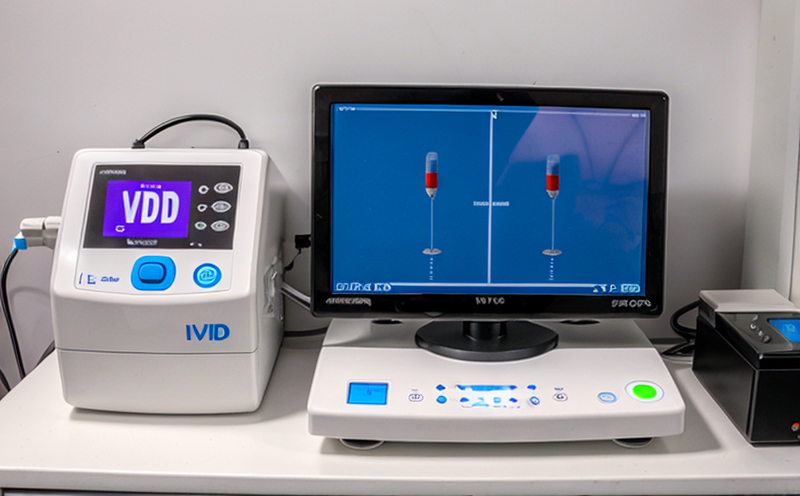Method Correlation Testing with Predicate Devices
Method correlation testing with predicate devices is a critical step in the development and validation of new In Vitro Diagnostic (IVD) tests. This process ensures that any new diagnostic method produces reliable, consistent, and accurate results relative to a previously validated test—a predicate device. The importance of this cannot be overstated; it directly impacts patient safety and regulatory compliance.
When performing method correlation testing with predicate devices, the primary goal is to demonstrate equivalence or interchangeability between two different methods of measurement used for the same analyte within an IVD product. This ensures that healthcare providers can continue using existing, validated tests while also having confidence in newly developed ones.
The process typically involves comparing results from a new method against those obtained by a well-established predicate device under controlled conditions. Specimens must be prepared according to standard procedures and analyzed using both methods simultaneously or sequentially. Data points are then collected meticulously for statistical analysis.
Accurate data interpretation is crucial during this phase; even minor discrepancies could indicate issues with either the new method or the existing one. Therefore, rigorous quality control measures should be implemented throughout the testing process to minimize variability and ensure reliable results.
Once all necessary comparisons have been made, statistical techniques such as linear regression analysis are used to assess whether there is a strong correlation between the two sets of data points. If significant differences are found, further investigation into potential causes may be required before proceeding with final validation steps.
The results from method correlation testing play an essential role in determining whether changes made during product development have affected performance characteristics such as precision, accuracy, linearity, or other key parameters relevant to the intended use of the device. Compliance with relevant international standards like ISO 17025 and FDA requirements is mandatory for laboratories conducting these types of studies.
In summary, method correlation testing serves as a critical quality assurance measure that helps maintain high standards of diagnostic accuracy across different generations of IVD products. By ensuring consistency between new methods and established predicate devices, labs can help protect patients by reducing risks associated with unreliable test results.
Why It Matters
The significance of method correlation testing extends beyond mere technicalities; it has profound implications for public health and safety. Ensuring that new diagnostic tools are equivalent to existing, validated methods reduces the risk of errors leading to incorrect diagnoses or treatments.
For patients, this translates into more accurate test results which can lead to better treatment decisions and improved outcomes. From a regulatory perspective, successful completion of method correlation testing provides evidence supporting compliance with stringent quality standards set forth by bodies such as the U.S. Food and Drug Administration (FDA) and European Medicines Agency (EMA).
Additionally, healthcare providers benefit from having access to reliable diagnostic information regardless of which version of the test they choose to use. This fosters trust between clinicians and patients while also facilitating smoother transitions when adopting new technologies.
The importance of this process cannot be overstated in safeguarding both individual patient welfare and broader public health goals. It underscores the necessity for thorough, scientifically rigorous testing practices within the medical device industry.
Industry Applications
- Clinical Chemistry: Ensuring that new methods of measuring biochemical markers align with existing standards.
- Molecular Diagnostics: Verifying the consistency between novel genetic tests and established polymerase chain reaction (PCR) protocols.
- Blood Glucose Monitoring: Confirming equivalency between traditional fingerstick meters and newer continuous glucose monitoring systems.
- Cytogenetics: Guaranteeing that new techniques for analyzing chromosomes match the precision of currently used methods.
These examples illustrate just how widely applicable method correlation testing is across various subsectors within medical device manufacturing. By ensuring consistency between different technologies, manufacturers and clinicians alike can rest assured knowing they are working with reliable diagnostic tools.
Why Choose This Test
Selecting the appropriate method correlation testing protocol for your specific application is vital to achieving accurate and meaningful results. Here’s why choosing this type of test makes sense:
- Regulatory Compliance: Demonstrating equivalence with a predicate device helps meet stringent regulatory requirements.
- Patient Safety: Ensuring that new tests produce comparable results enhances diagnostic reliability, potentially saving lives.
- Patient Trust: Consistent performance across generations of devices fosters confidence among healthcare professionals and patients.
- Economic Efficiency: By validating methods early in the development cycle, resources are not wasted on flawed products later down the line.
The benefits extend far beyond mere compliance; they contribute significantly to improving patient care and advancing medical science.





